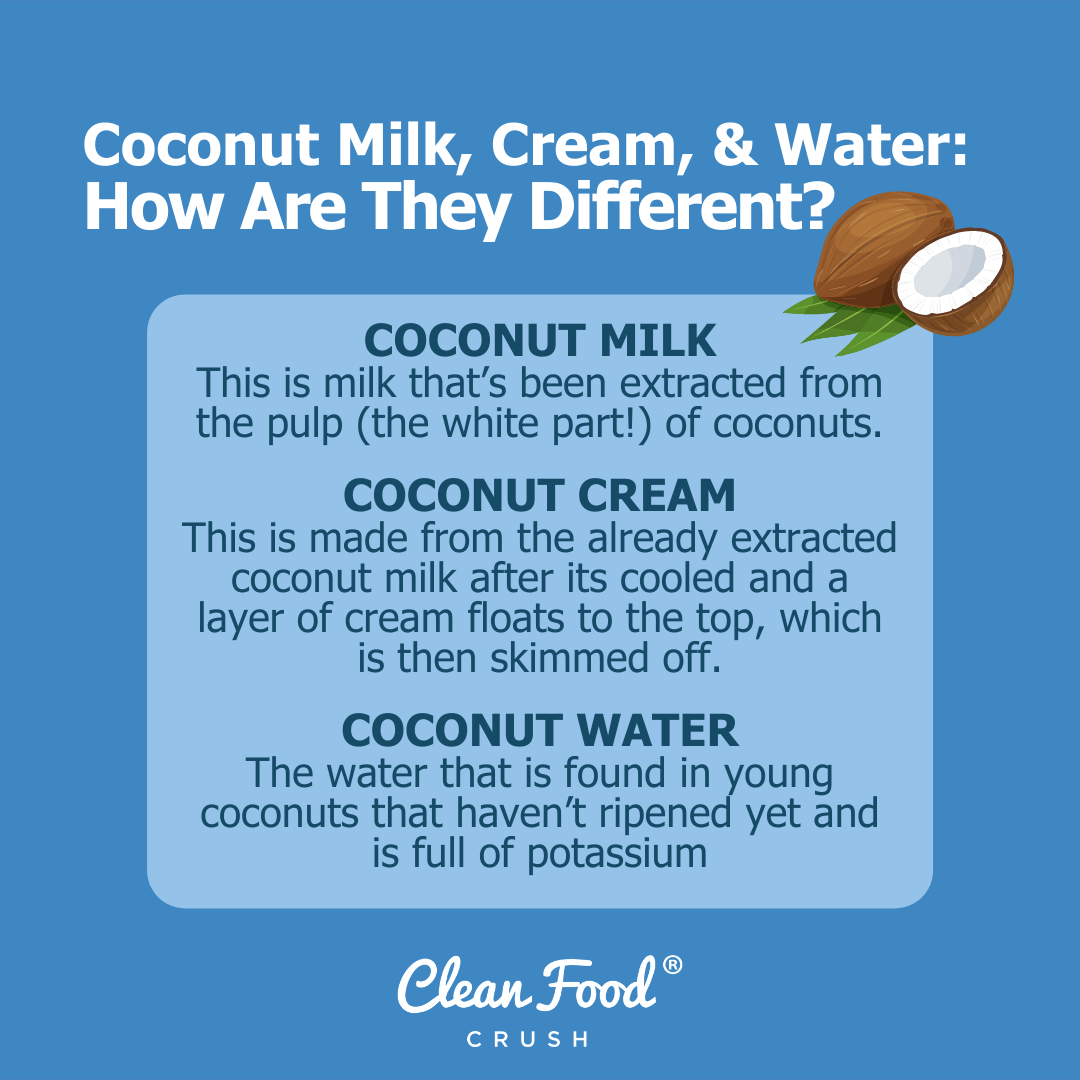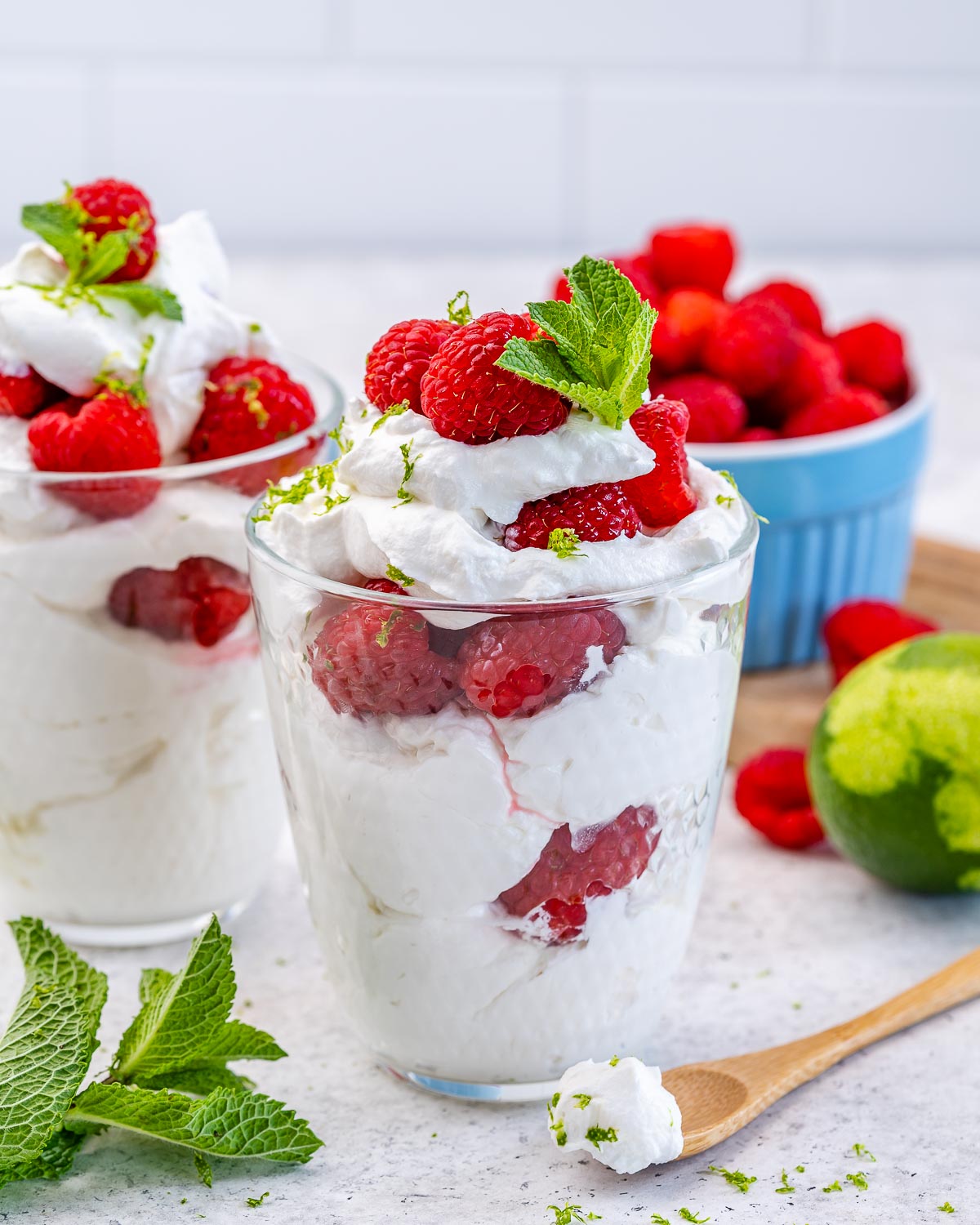

Coconut Milk, Cream, and Water: How Are They Different?
Coconut milk has quickly gained fame for its nutty, naturally sweet taste in the craze of alternative milk derivatives and its many forms such as coconut oil. But the many different coconut products can be confusing. Maybe you’ve gone to the store looking for coconut milk and come across coconut cream and coconut water, too.
Why all the coconut? Well, they are a super popular fruit and have some fantastic properties, including healthy fats, proteins, vitamins, and minerals, all of which are important in a balanced diet.
But what’s the difference?

COCONUT MILK
Simply put, this is milk that’s been extracted from the pulp (the white part!) of coconuts. It’s a popular ingredient in Asian, African, and Latin American foods. It’s an excellent substitute for dairy milk and can be used as a broth in most soups, as well as a milk alternative in your favorite coffee or tea.
For a delicious recipe using coconut milk, try this one-pan shrimp coconut curry!
Coconut milk can also be a fantastic resource for weight loss, given its high levels of healthy fats. It also has lots of electrolytes like potassium and magnesium, which can help balance your electrolyte levels and are essential to preventing dehydration after exercising.
If you’re looking for a natural way to prevent anemia and heart disease, incorporating coconut milk into your diet may be helpful! It has lots of iron and HDL cholesterol (the healthy stuff we actually want in our bodies.) Vitamins A and E are prevalent in this milk derivative too, which can lead to healthier skin and hair (plus, did you know you can use coconut milk on your actual hair?! Its thick texture seals in moisture and can help prevent dandruff and itchy scalps.)
COCONUT CREAM
On the other hand, coconut cream is a thick cream made from the already extracted coconut milk (which helps if you accidentally buy coconut milk instead of cream… more on that later!). The milk is cooled, and in the process, a layer of cream floats to the top, which is then skimmed off. Due to its higher fat content, coconut cream is thicker than coconut milk and is often used to thicken foods such as curry or mousse.
Treat yourself to a tasty coconut cream mousse!
💡 Pro Tip: when in the store, don’t mistake coconut cream for cream of coconut, which is sweetened coconut cream (regular coconut cream isn’t sweet). Cream of coconut has the consistency of a thick syrup, often compared to the texture of sweetened condensed milk, and is used as a sweetener in drinks and desserts. Unfortunately, you can’t interchange the two different products. So, if you accidentally buy cream of coconut instead of coconut cream, you’ll have to run back to the store!
COCONUT WATER
Finally, let’s talk about coconut water, which is the water found in young coconuts that haven’t ripened yet. Coconut water has a lot of potassium, so sometimes it can be marketed as a sports drink, but there’s also a lot of sodium in coconut water. Increased sodium levels can lead to dehydration, so it’s not the best drink substitute if you’re looking for something super hydrating.
While there’s not a lot of calories in coconut water (only 50 per cup, as opposed to 500 per cup in coconut milk), it probably shouldn’t be used for cooking, as it doesn’t provide anything extra like the cream or milk in regards to flavoring and thickness. It can significantly benefit a diet lacking potassium, but regular old water is still your best bet for general hydration.
Use some coconut water to treat your whole family with a delicious unicorn breakfast!
As you can see, coconuts are an excellent resource for finding alternatives to your everyday products such as milk, creams, and water. They can give a fun kick of flavor to your curries and soups, provide that perfect coconut flavor in your favorite pina colada, and offer a healthier option in your coffee. Whatever your reason for using coconut products, be sure to follow these tips when exploring using them:
- Always shake your coconut products well before use. The fats in coconut products tend to separate from the rest of the liquid, so be sure to mix it all back together before pouring for that perfect texture.
- Read your labels well! You’ll want to be sure you’re picking the suitable ingredient for whatever you’re cooking (or putting on your hair), so be sure to check that you’re buying the correct item before heading out of the store.
Thought you bought the right thing but didn’t? No worries.
Here’s how to make coconut milk from coconut cream and vice versa:
- For coconut milk, mix 2 tablespoons of coconut cream into ¾ cup of water. This should make about 1 cup of coconut milk!
- For coconut cream, put a can of coconut milk into the fridge overnight so it’s completely cool. Then, open the can and use a spoon to scrape off the top layer of cream! You should get about a ½ cup of coconut cream.
One of the best parts of trying new foods or ingredients is finding out what you like the best. So if you’ve been looking for a new way to freshen up your favorite curry recipe, or you’ve been meaning to stop drinking dairy products, try incorporating coconut into your diet or lifestyle routines. The results may surprise you!
What coconut product is your favorite, and how do you use it most often? Let me know in the comments!



















